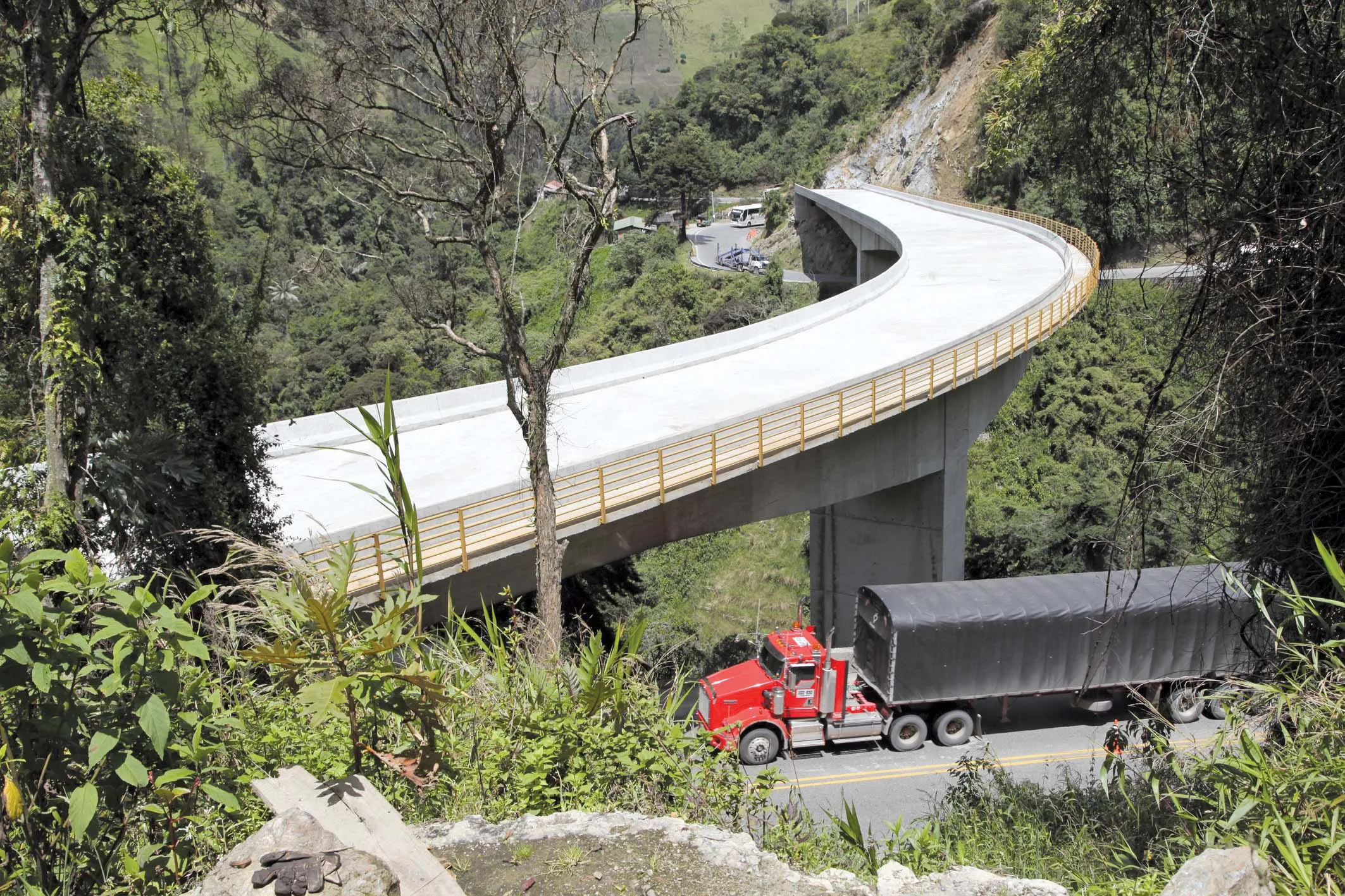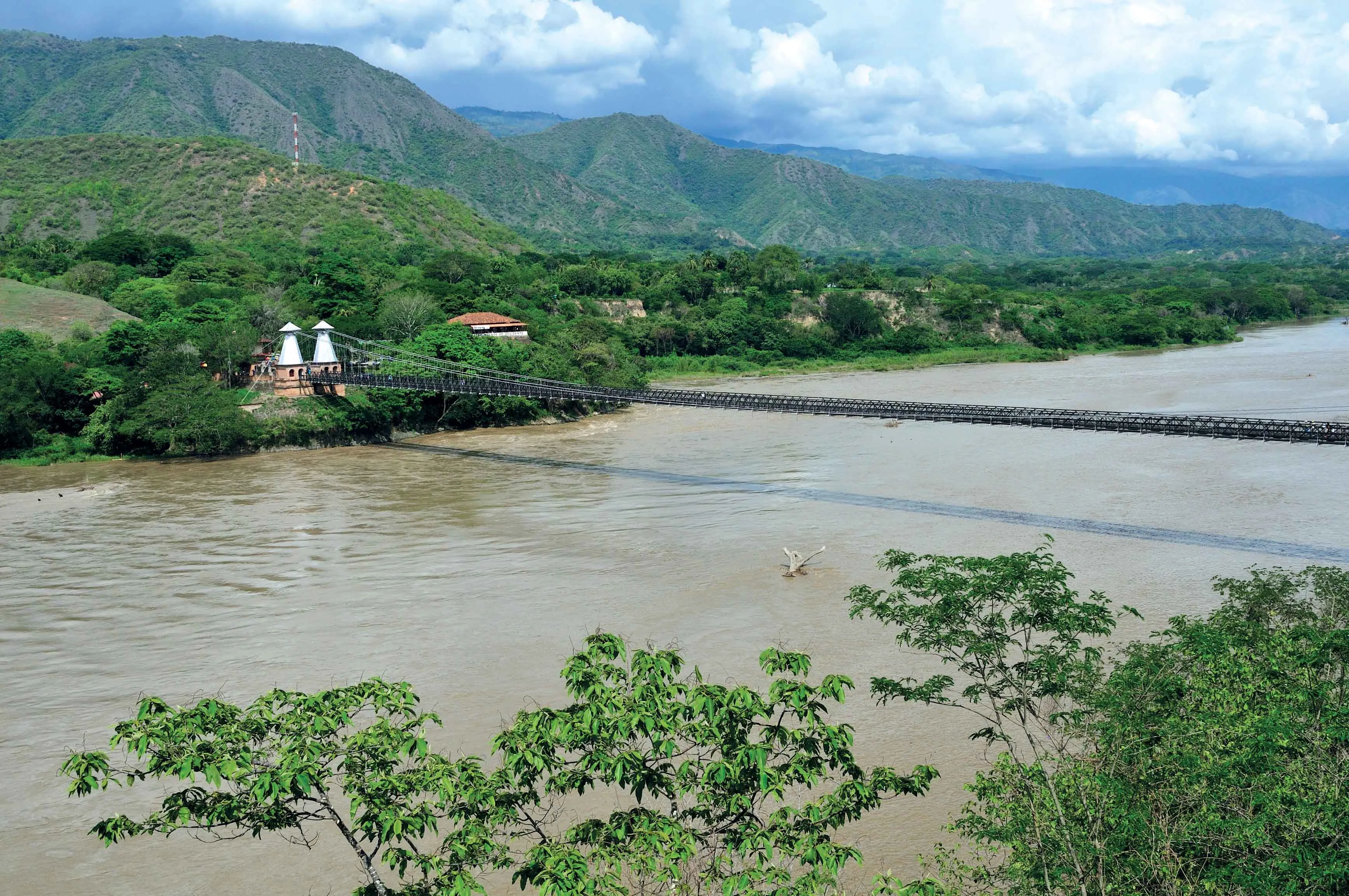A new tunnel is forming an important link for a major Colombian highway - Mauro Nogarin reports
Work on a major highway project is underway in Colombia, forming part of the Bogota-Buenaventura Corridor. The highway has a length of 503km and is located in central Colombia, connecting the departments of Tolima and Quindio, across the central Andes, with a total cost of around US$330 million.
A key section of the project consists of building a unidirectional tunnel of approximately 8.65km in length. Anot
May 23, 2014
Read time: 4 mins

A new tunnel is forming an important link for a major Colombian highway - Mauro Nogarin reports
Work on a major highway project is underway in Colombia, forming part of the Bogota-Buenaventura Corridor. The highway has a length of 503km and is located in central Colombia, connecting the departments of Tolima and Quindio, across the central Andes, with a total cost of around US$330 million.
A key section of the project consists of building a unidirectional tunnel of approximately 8.65km in length. Another important task is working on a section of the highway between the cities of Calarca (Quindio) and the Americas interchange as well as a stretch between the interchange at the Bermellon ramp and the city of Cajamarca (Tolima).
This project is delivering a major improvement for Colombia’s highway infrastructure as it is being built using the latest and most modern technology in the highway sector. The purpose of this work is to improve traffic from the port city of Buenaventura to the interior of the country, boosting transportation and reducing costs and travel times.2812 Invias, the National Highway Institute, is the government agency in charge of supervising the construction of this highway improvement work and has also selected the companies working on the project. Invias underwent a lengthy bidding process to select the contractor, with the process being awarded to Union Temporal Segundo Centenario (UTSC). This consortium was established between the Mexican construction company Condux and the Spanish builder Herreño Fronpeca in association with the Colombian companies Constructora Carlos Collins, Alvarez y Collins, Promotora Montecarlos Vías, Túneles de Colombia, Construirte; Gayco, Tecniciviles, H y H Arquitectura, and Miguel Cami
lo Castillo Huertas.
The project has been carried out in three phases. The first stage was the construction of the tunnel between Segundo Centenario- Tunel de la Linea, which has a length of 8.65km at an altitude of 2,422m above sea level, located between Galicia in the department of Quindio and Bermellon in the department of Tolima.
The second stage was the construction of a second lane between PR4+800 to PR16+000 on the existing local highway between the turnaround at Versalles to the new interchange at Americas. This stretch includes construction of four mini tunnels and 10 bridges.
The third and last stage of the project consists of building a second lane between the PR35+000 to PR47+500 highway, located between the new exchange at Bermellon and the entrance to the city of Cajamarca.
To date, construction of the Segundo Centenario tunnel has advanced 8,010m of the projected 8,652m length, which is a 93% completion rate. Construction of the additional lanes in Tolima as well as the project in Quindío, are about 65% completed. The construction company in charge of the Quindio project sited an asphalt plant on location to accelerate completion of the 18km section of road. According to the goals and timetable scheduled by the engineering team of INVIAS, the project should be completed by mid-2014. After the main construction is completed, complementary work will begin for the entire project.
The geology along the path of the tunnel from opening at Quindio is made up of Cretaceous period rocks which belong to the Quebrada Grande Complex; the rocks are mainly volcanic in nature and are made up of meta-diabasis and meta-sedimentary layers.
In the middle section of the tunnel, while tunnelling through the Aranzazu-Manizales fault, the meta-sedimentary rocks continued all the way through to the Quebrada grande Complex. While going through the La Esperanza and Los Chorros faults the geology changes to Paleozoic era rocks, belonging to the Cajamarca Complex and made up of black shale, green chlorite shale and quartz lenses. Toward the end of the tunnel, after the La Cristalina fault, the engineers excavated fractured rocks of medium hardness.
The engineering team at INVIAS opted for the new Austrian tunneling method (NATM) and the analysis and control of deformation of rocks and soil for excavating the tunnel. The technique used for excavation was to make controlled detonations for hard rock sections, and use mechanised excavation for soft soils in the following cycle of operations.
The tunnel support includes steel arches, bolting and sprayed concrete. One of the main obstacles to overcome during the excavation of the tunnel came when crossing the fault lines. Building in these areas required special treatments such as sheet metal, fibreglass bolts and in the case of the “La Alaska” (K1+250), it was necessary to detour the tunnel alignment.
Tunnel specifications
• Length: 8.65km
• Support pillars between tunnels: maximum 80m
• Structure gauge for vehicles: 4.9m
• Maximum speed for vehicular traffic permitted: 60km/h
• Lane width of 10.5m, made of hydraulic concrete
• Security kerb of 0.35m on each side made of hydraulic concrete
• Lateral safety rails of a minimum of 1m
• 10 spaces for emergency parking
• 60 spaces for fire safety
• 60 emergency spaces
• 17 emergency galleries (9 for pedestrians and 8 for vehicles) in case of emergency
Work on a major highway project is underway in Colombia, forming part of the Bogota-Buenaventura Corridor. The highway has a length of 503km and is located in central Colombia, connecting the departments of Tolima and Quindio, across the central Andes, with a total cost of around US$330 million.
A key section of the project consists of building a unidirectional tunnel of approximately 8.65km in length. Another important task is working on a section of the highway between the cities of Calarca (Quindio) and the Americas interchange as well as a stretch between the interchange at the Bermellon ramp and the city of Cajamarca (Tolima).
This project is delivering a major improvement for Colombia’s highway infrastructure as it is being built using the latest and most modern technology in the highway sector. The purpose of this work is to improve traffic from the port city of Buenaventura to the interior of the country, boosting transportation and reducing costs and travel times.
lo Castillo Huertas.
The project has been carried out in three phases. The first stage was the construction of the tunnel between Segundo Centenario- Tunel de la Linea, which has a length of 8.65km at an altitude of 2,422m above sea level, located between Galicia in the department of Quindio and Bermellon in the department of Tolima.
The second stage was the construction of a second lane between PR4+800 to PR16+000 on the existing local highway between the turnaround at Versalles to the new interchange at Americas. This stretch includes construction of four mini tunnels and 10 bridges.
The third and last stage of the project consists of building a second lane between the PR35+000 to PR47+500 highway, located between the new exchange at Bermellon and the entrance to the city of Cajamarca.
To date, construction of the Segundo Centenario tunnel has advanced 8,010m of the projected 8,652m length, which is a 93% completion rate. Construction of the additional lanes in Tolima as well as the project in Quindío, are about 65% completed. The construction company in charge of the Quindio project sited an asphalt plant on location to accelerate completion of the 18km section of road. According to the goals and timetable scheduled by the engineering team of INVIAS, the project should be completed by mid-2014. After the main construction is completed, complementary work will begin for the entire project.
The geology along the path of the tunnel from opening at Quindio is made up of Cretaceous period rocks which belong to the Quebrada Grande Complex; the rocks are mainly volcanic in nature and are made up of meta-diabasis and meta-sedimentary layers.
In the middle section of the tunnel, while tunnelling through the Aranzazu-Manizales fault, the meta-sedimentary rocks continued all the way through to the Quebrada grande Complex. While going through the La Esperanza and Los Chorros faults the geology changes to Paleozoic era rocks, belonging to the Cajamarca Complex and made up of black shale, green chlorite shale and quartz lenses. Toward the end of the tunnel, after the La Cristalina fault, the engineers excavated fractured rocks of medium hardness.
The engineering team at INVIAS opted for the new Austrian tunneling method (NATM) and the analysis and control of deformation of rocks and soil for excavating the tunnel. The technique used for excavation was to make controlled detonations for hard rock sections, and use mechanised excavation for soft soils in the following cycle of operations.
The tunnel support includes steel arches, bolting and sprayed concrete. One of the main obstacles to overcome during the excavation of the tunnel came when crossing the fault lines. Building in these areas required special treatments such as sheet metal, fibreglass bolts and in the case of the “La Alaska” (K1+250), it was necessary to detour the tunnel alignment.
Tunnel specifications
• Length: 8.65km
• Support pillars between tunnels: maximum 80m
• Structure gauge for vehicles: 4.9m
• Maximum speed for vehicular traffic permitted: 60km/h
• Lane width of 10.5m, made of hydraulic concrete
• Security kerb of 0.35m on each side made of hydraulic concrete
• Lateral safety rails of a minimum of 1m
• 10 spaces for emergency parking
• 60 spaces for fire safety
• 60 emergency spaces
• 17 emergency galleries (9 for pedestrians and 8 for vehicles) in case of emergency






